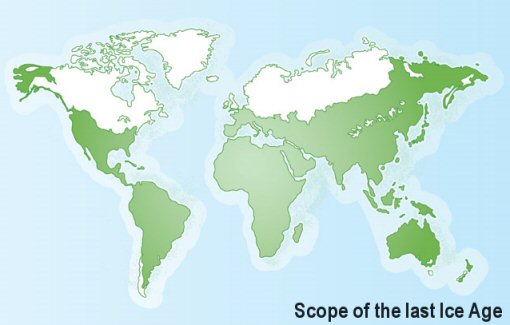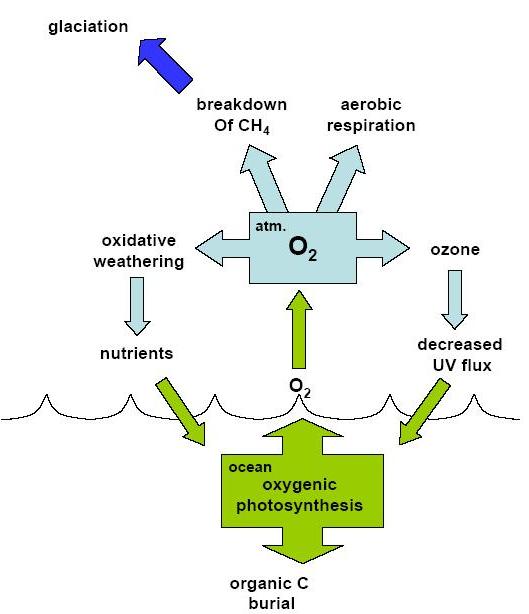
© unknown
Those who ignore the geologic perspective do so at great risk. In fall of 1985, geologists warned that a Columbian volcano, Nevado del Ruiz, was getting ready to erupt. But the volcano had been dormant for 150 years. So government officials and inhabitants of nearby towns did not take the warnings seriously. On the evening of November 13, Nevado del Ruiz erupted, triggering catastrophic mudslides. In the town of Armero, 23,000 people were buried alive in a matter of seconds.
For ninety percent of the last million years, the normal state of the Earth's climate has been an ice age. Ice ages last about 100,000 years, and are punctuated by short periods of warm climate, or interglacials. The last ice age started about 114,000 years ago. It began instantaneously. For a hundred-thousand years, temperatures fell and sheets of ice a mile thick grew to envelop much of North America, Europe and Asia. The ice age ended nearly as abruptly as it began. Between about 12,000 and 10,000 years ago, the temperature in Greenland rose more than 50 °F.
We don't know what causes ice ages to begin or end. In 1875, a janitor turned geologist, James Croll, proposed that small variations in Earth's orbit around the Sun were responsible for climate change. This idea enjoyed its greatest heyday during the 1970s, when ocean sediment cores appeared to confirm the theory. But in 1992, Ike Winograd and his colleagues at the US Geological Survey falsified the theory by demonstrating that its predictions were inconsistent with new, high-quality data.

Comment: This is a very good article until the last five paragraphs. The worldwide global warming psychological conditioning cannot be threatened by any piece of evidence that may counter the chosen agenda. It should be pointed out that the data shows the planet has been globally cooling for at least 7 years and possibly as much as 10-11 years. (Link), (Link), (Link).
The possibility and even high probability given the data that what lies ahead is more frequent delayed springs in the north due to cooling is not even mentioned.
But, dut da da dah... Global Warming is the cause of course! Of course. And if there were less snow and earlier springs it would be of course - you got it - global warming. And it would be expected regardless. If such oscillations increase and spread south and crops fail and there are fuel shortages, it will be because of global warming. This last paragraph is just plain insulting. How are the people to understand anything when the spokes people are so utterly wrong?
We will have to see what the next few years bring us.